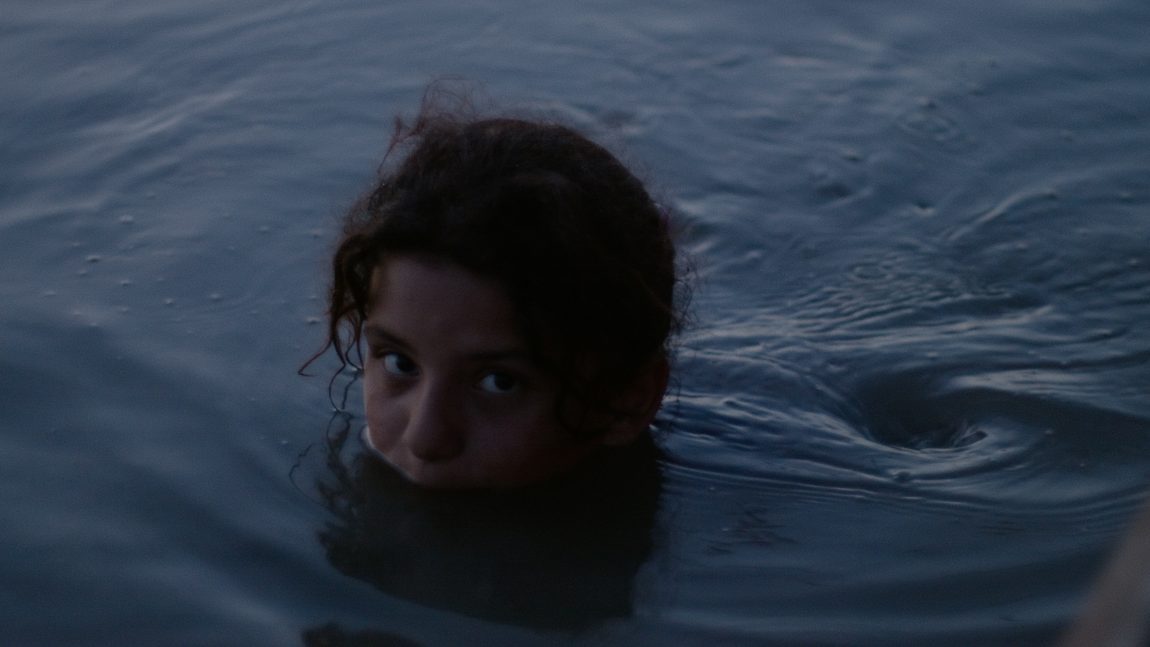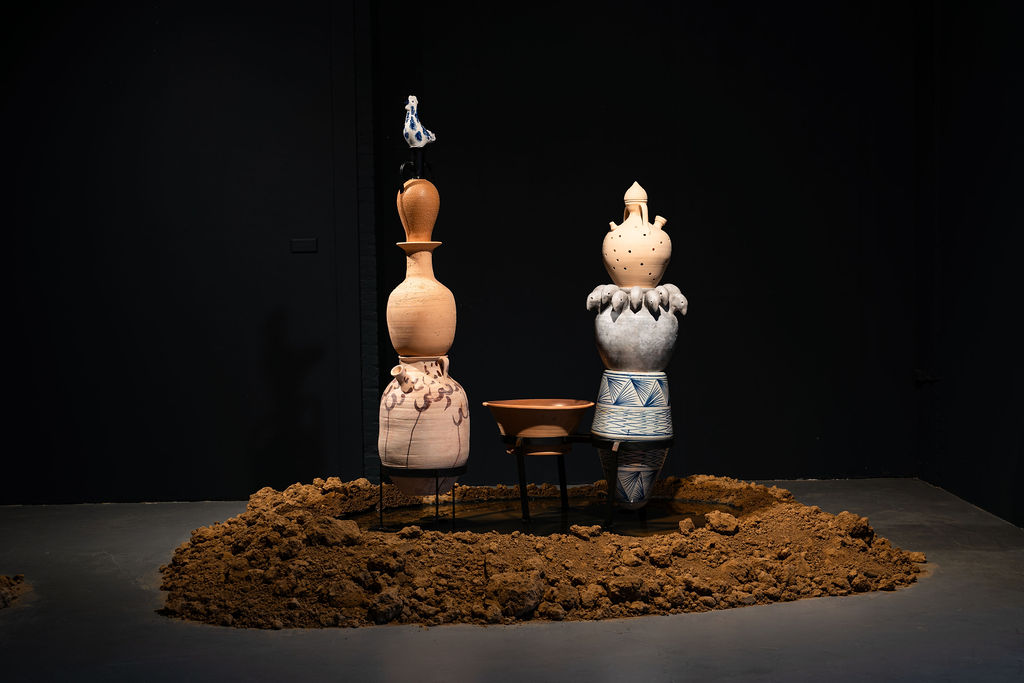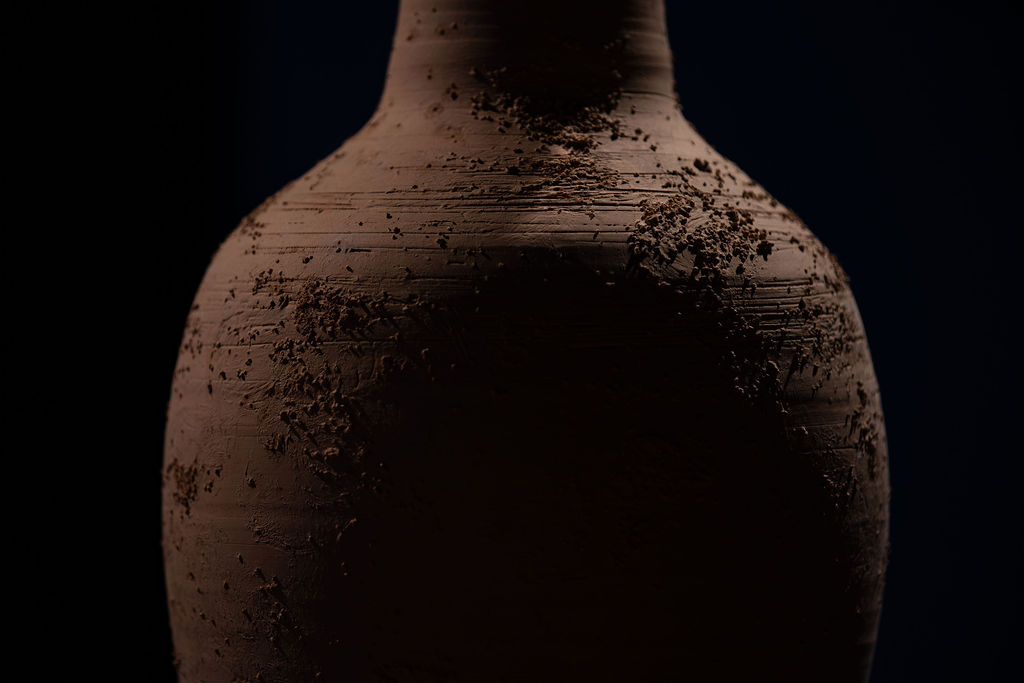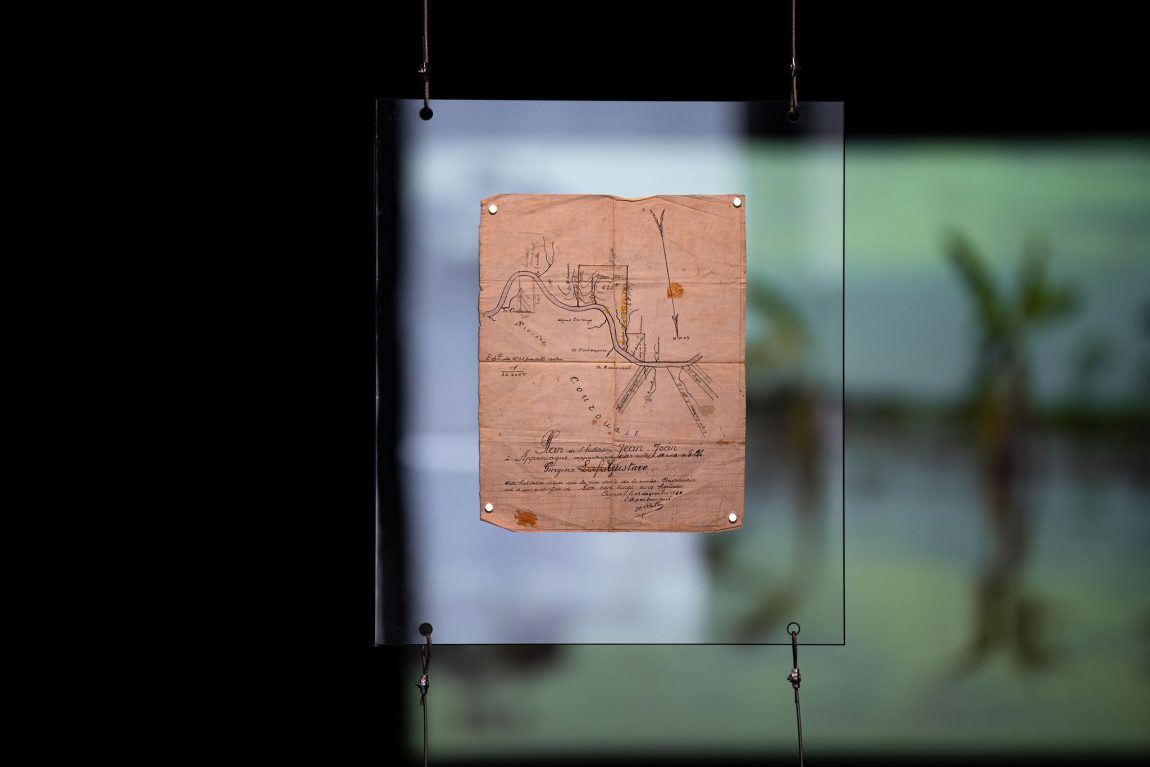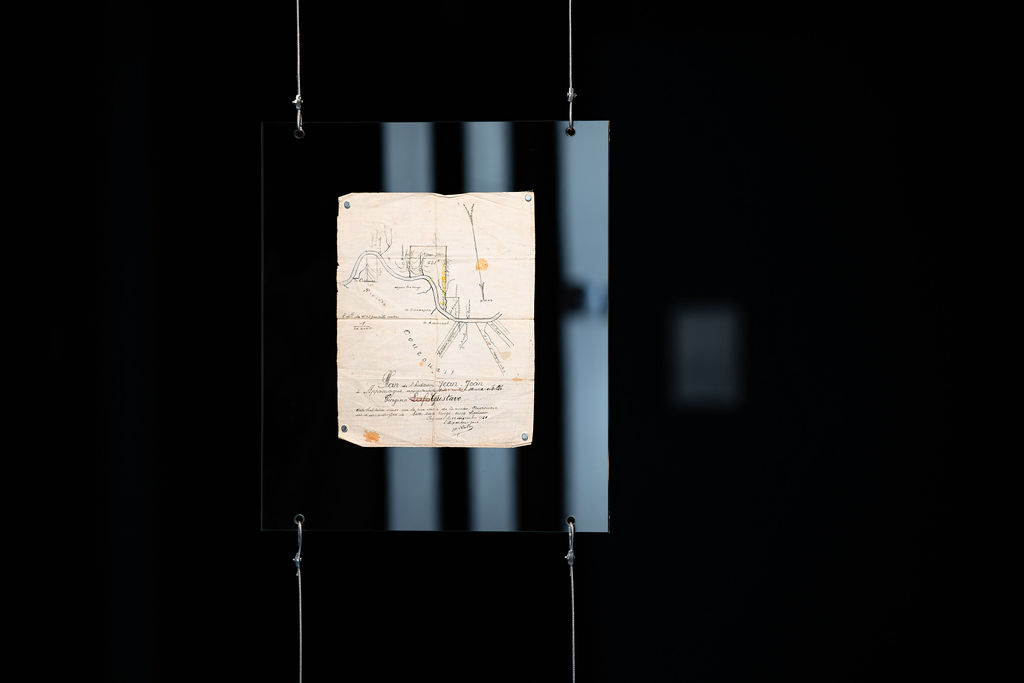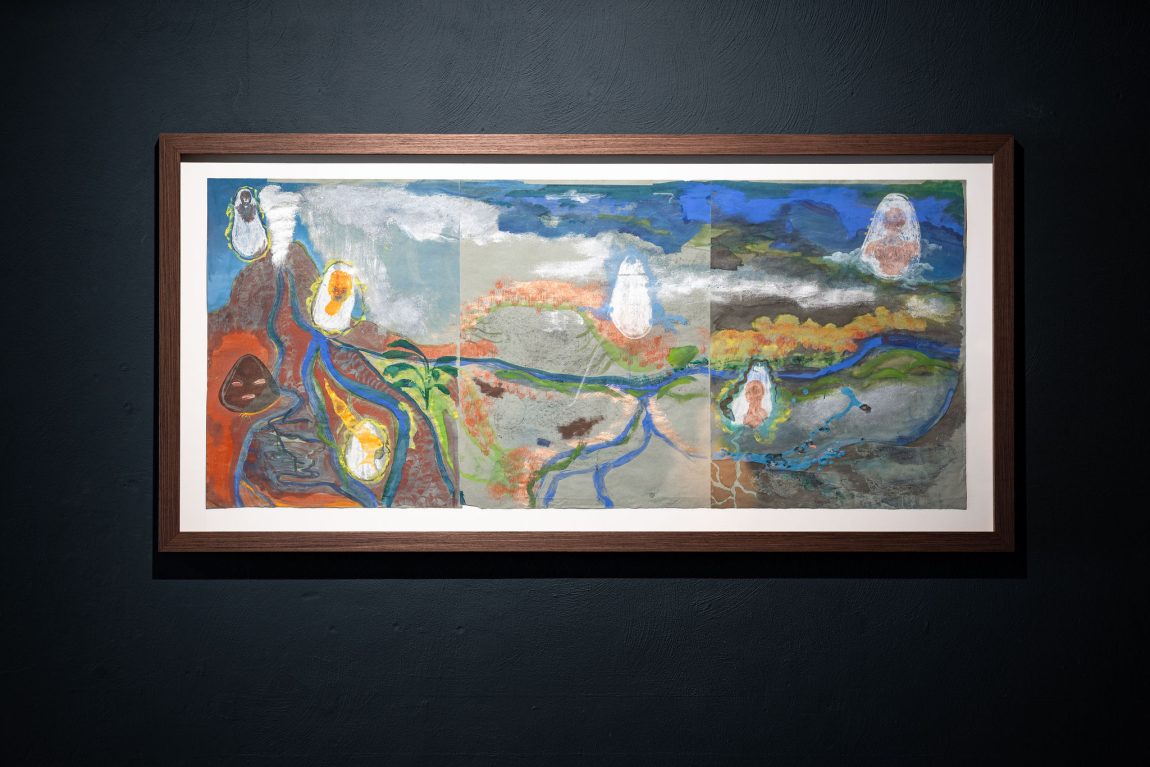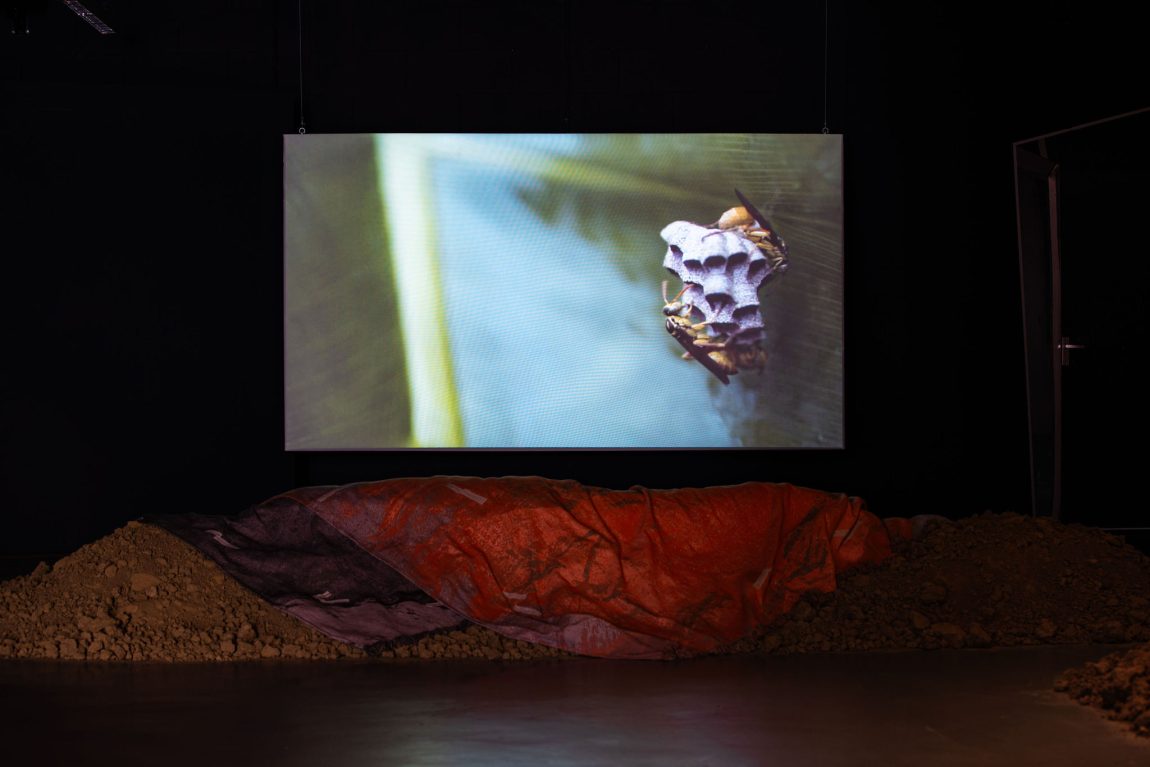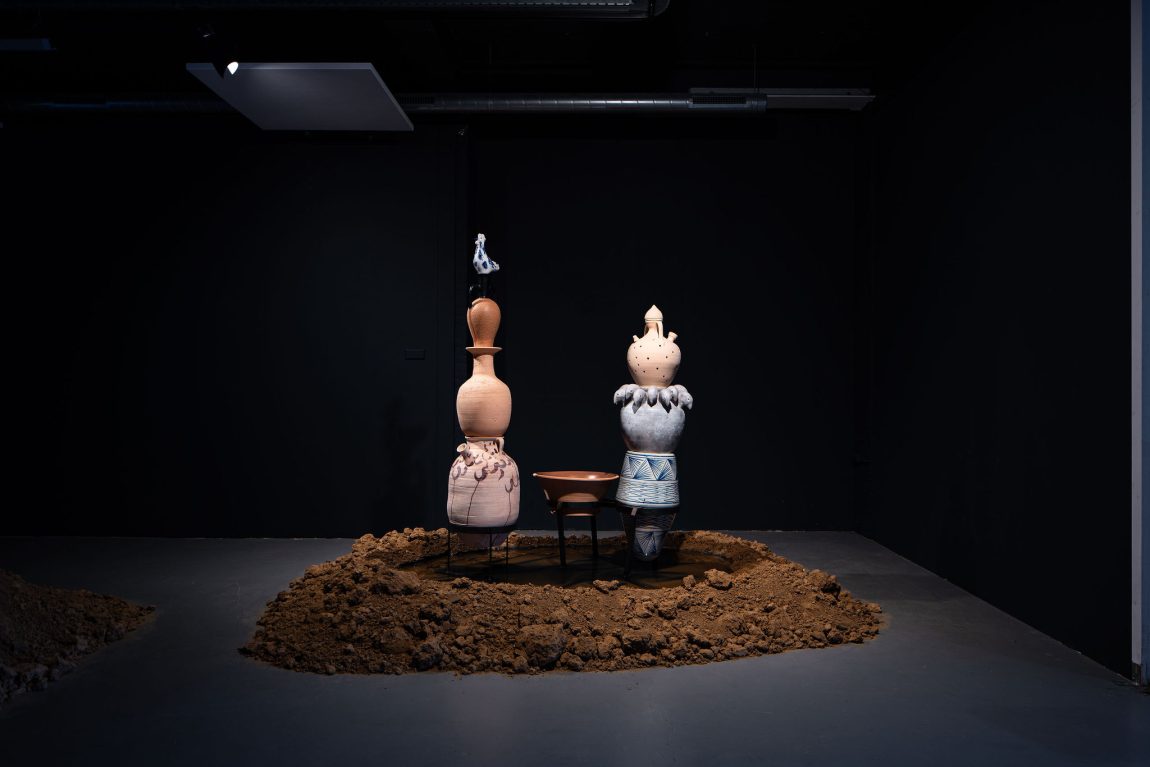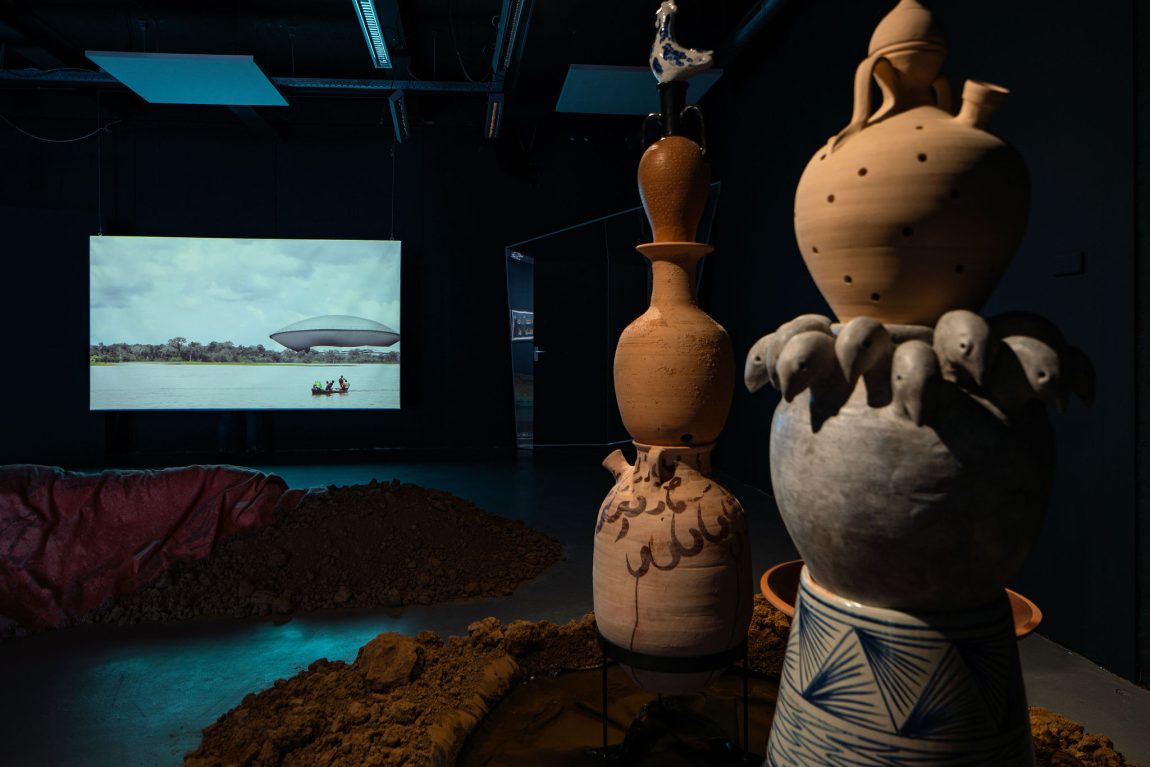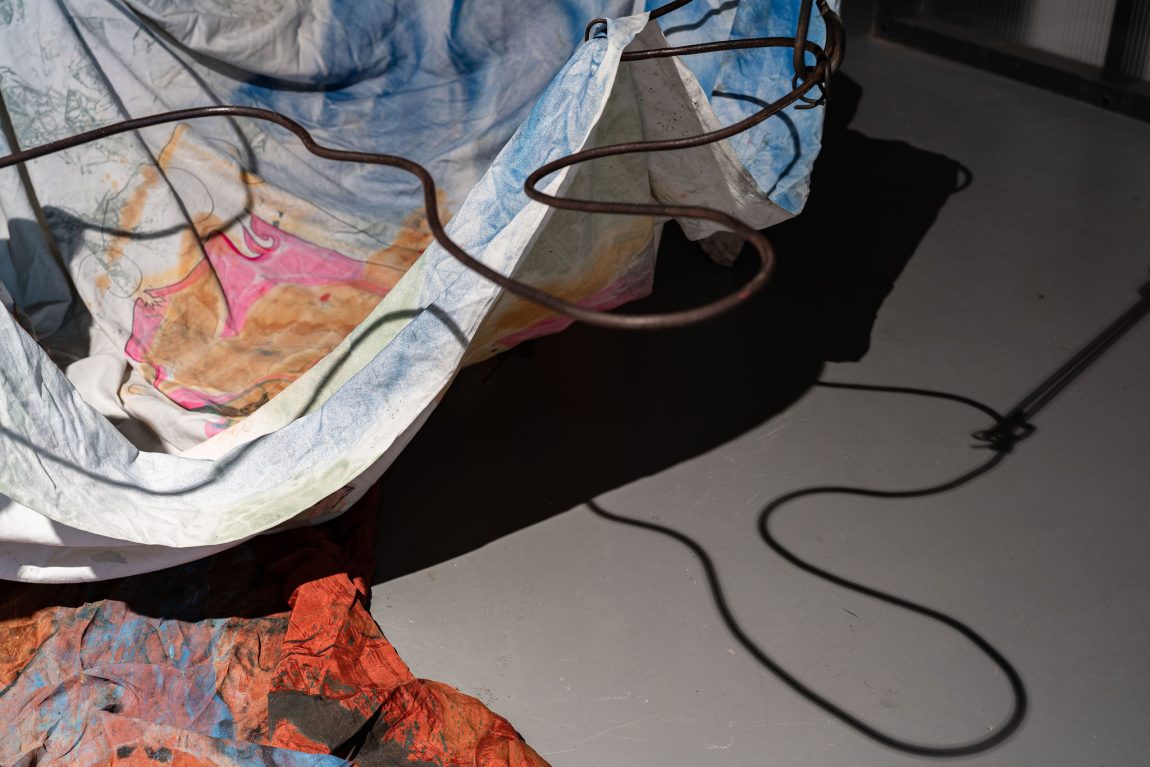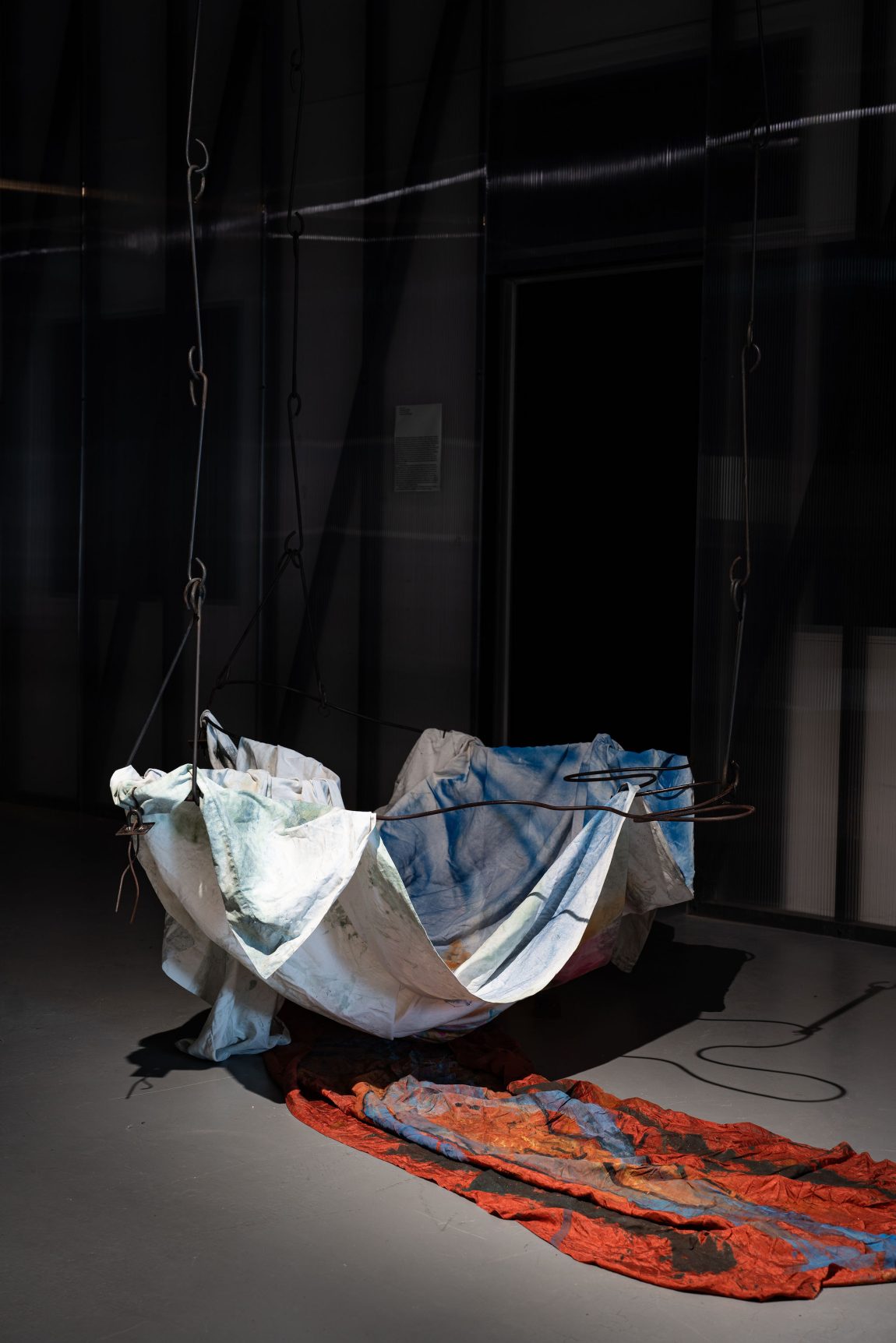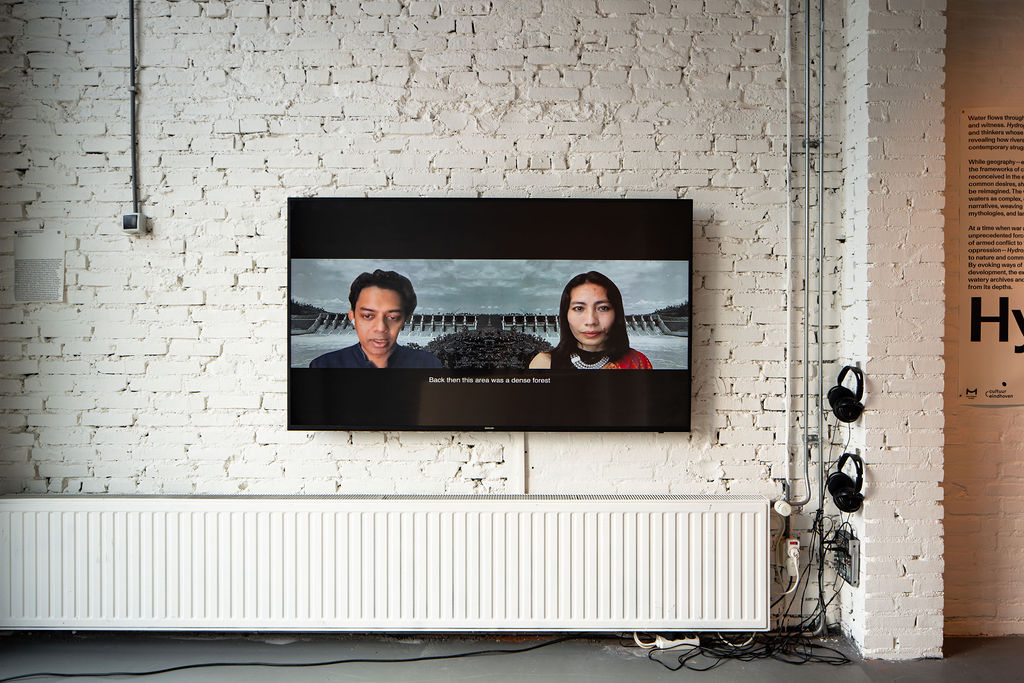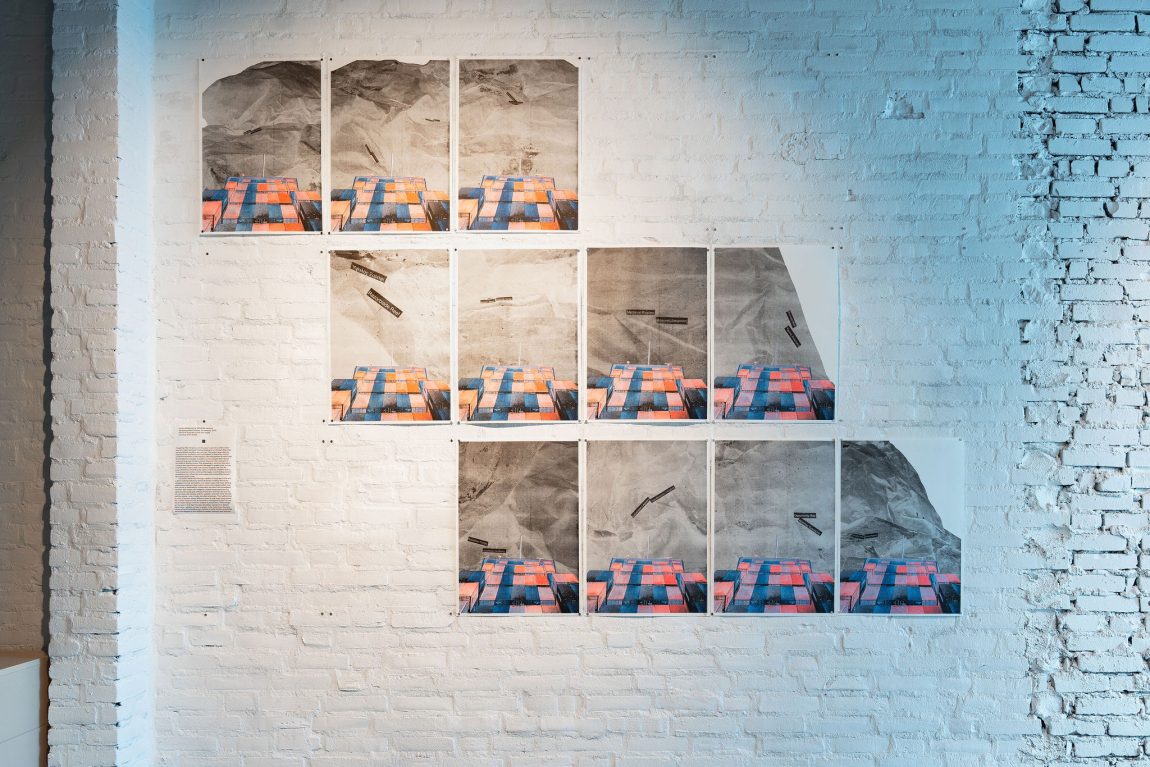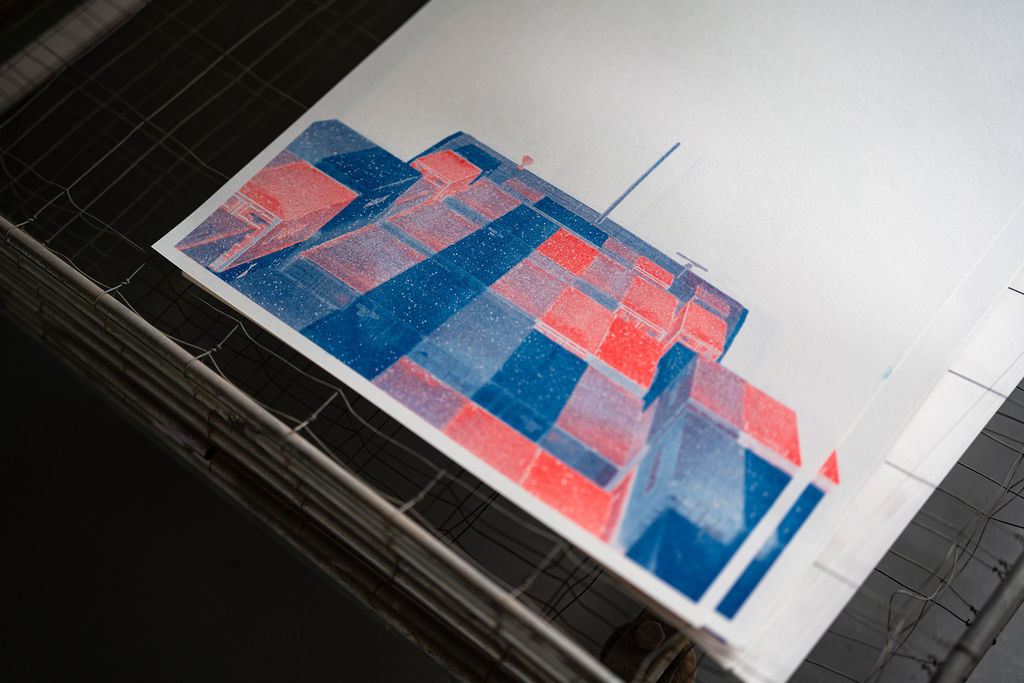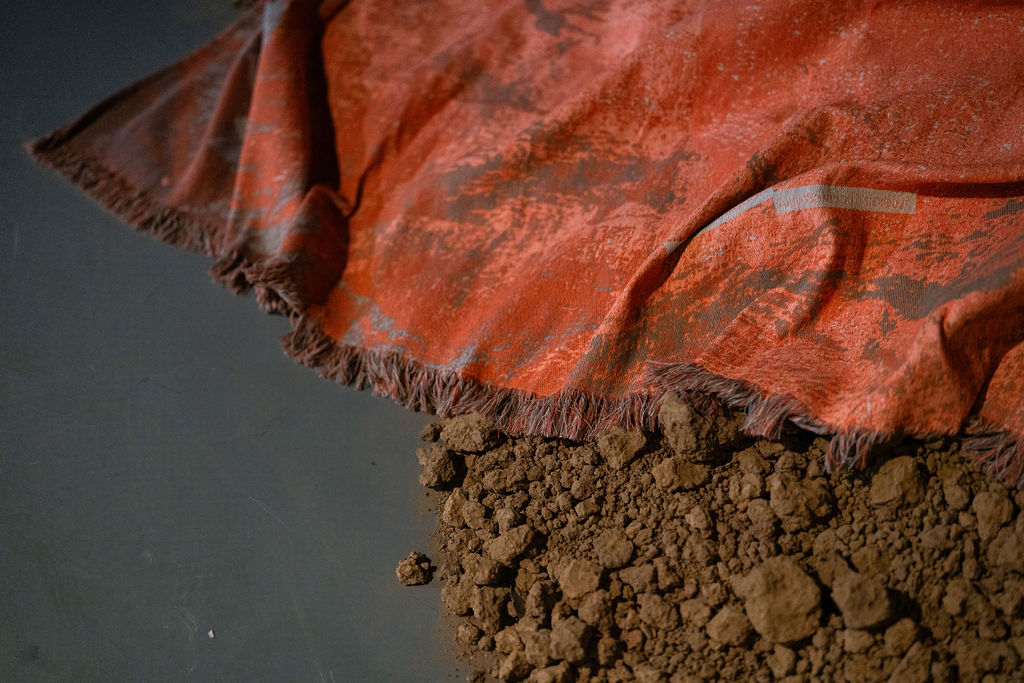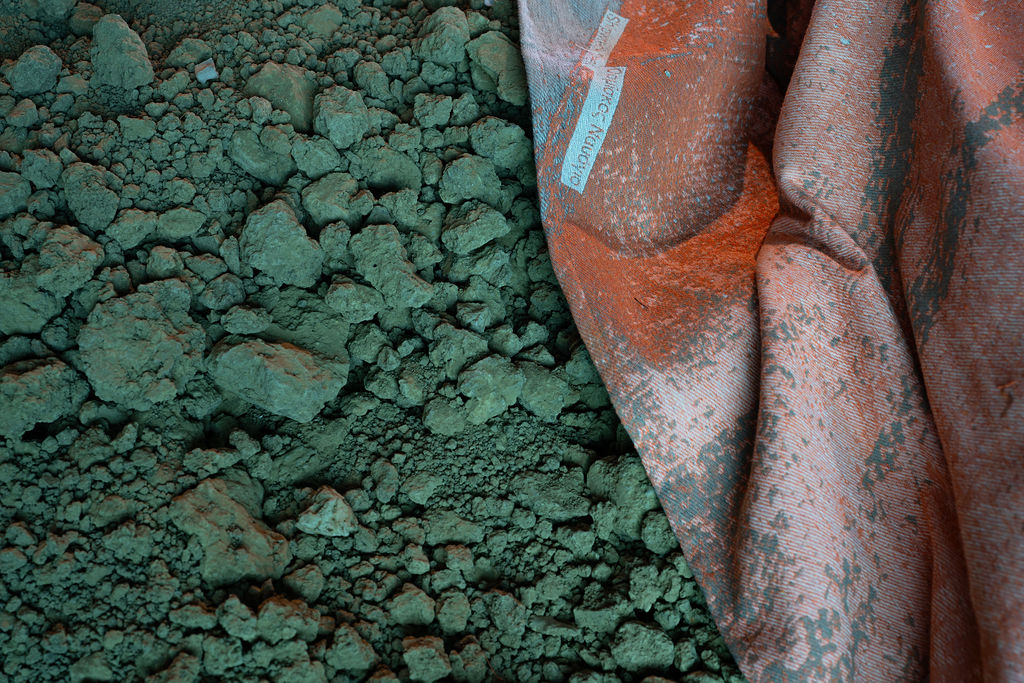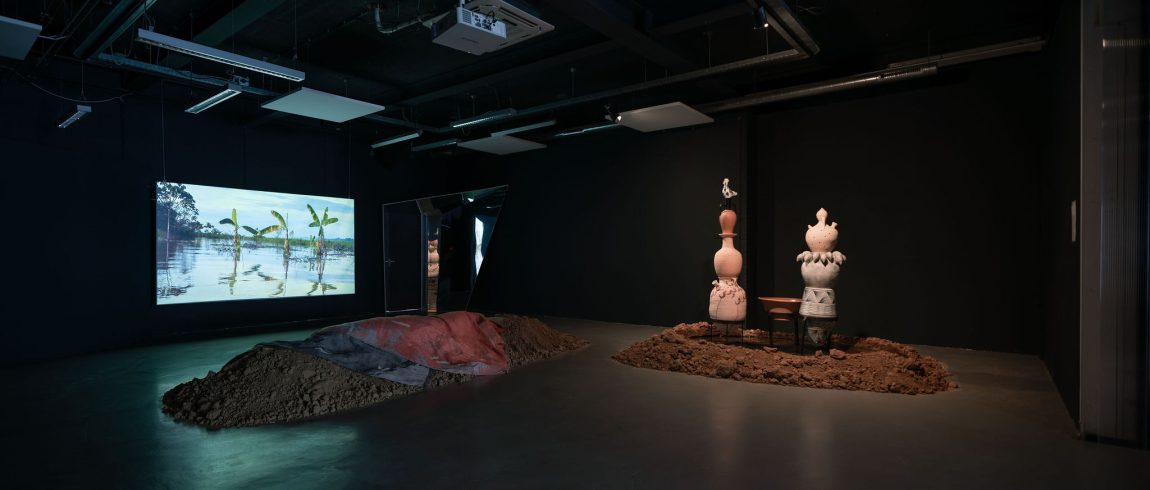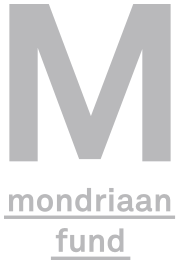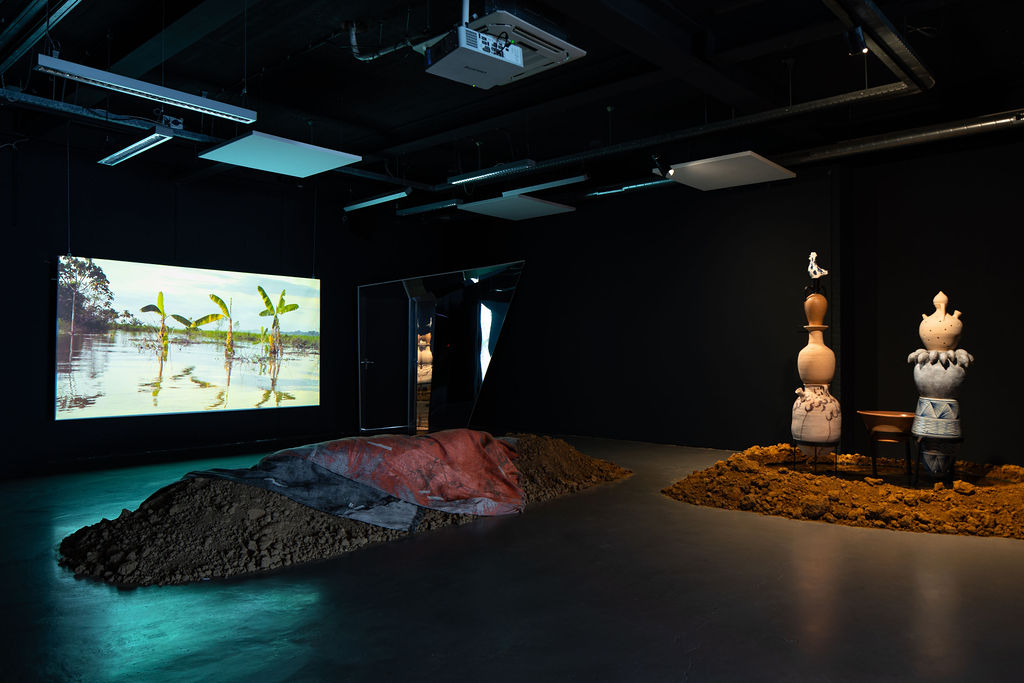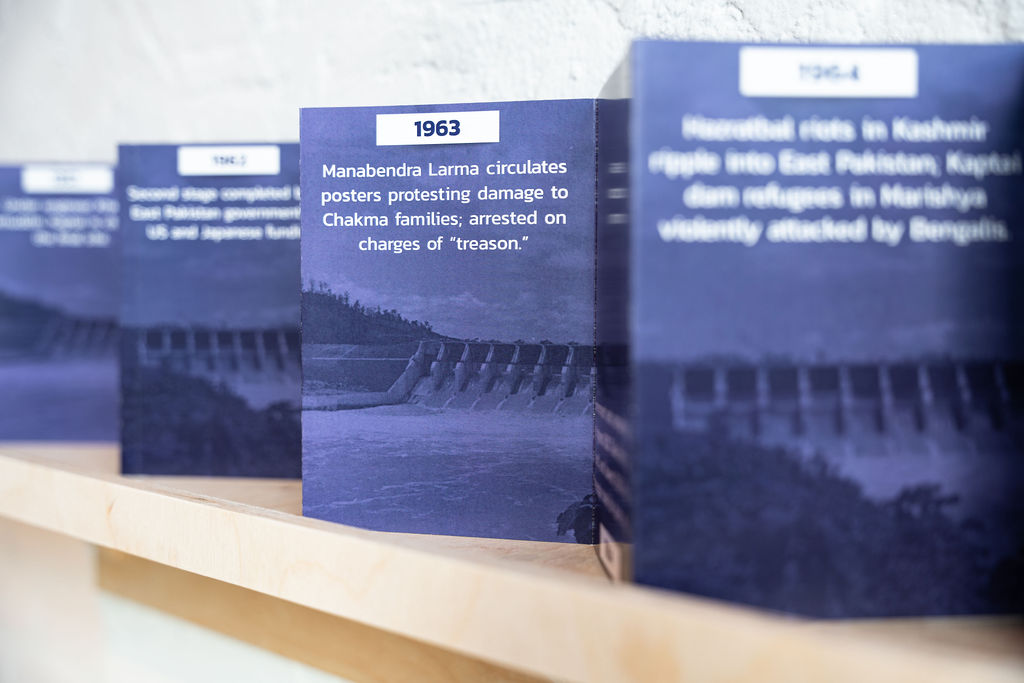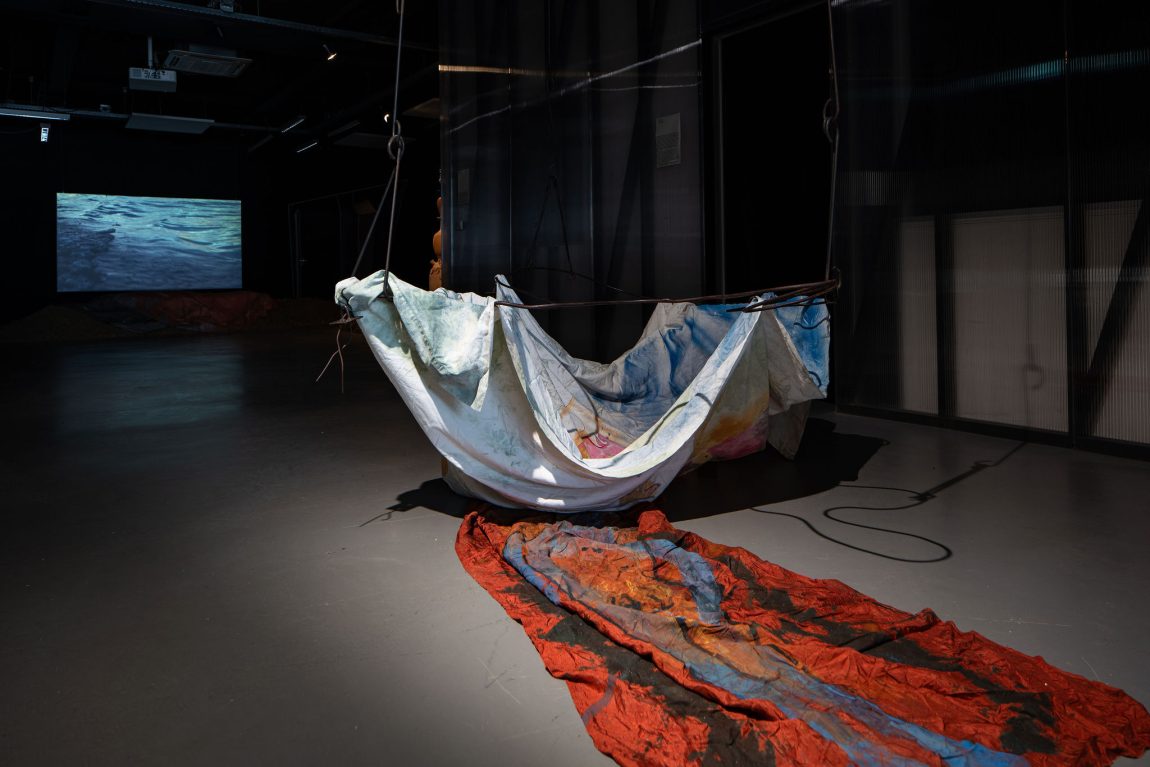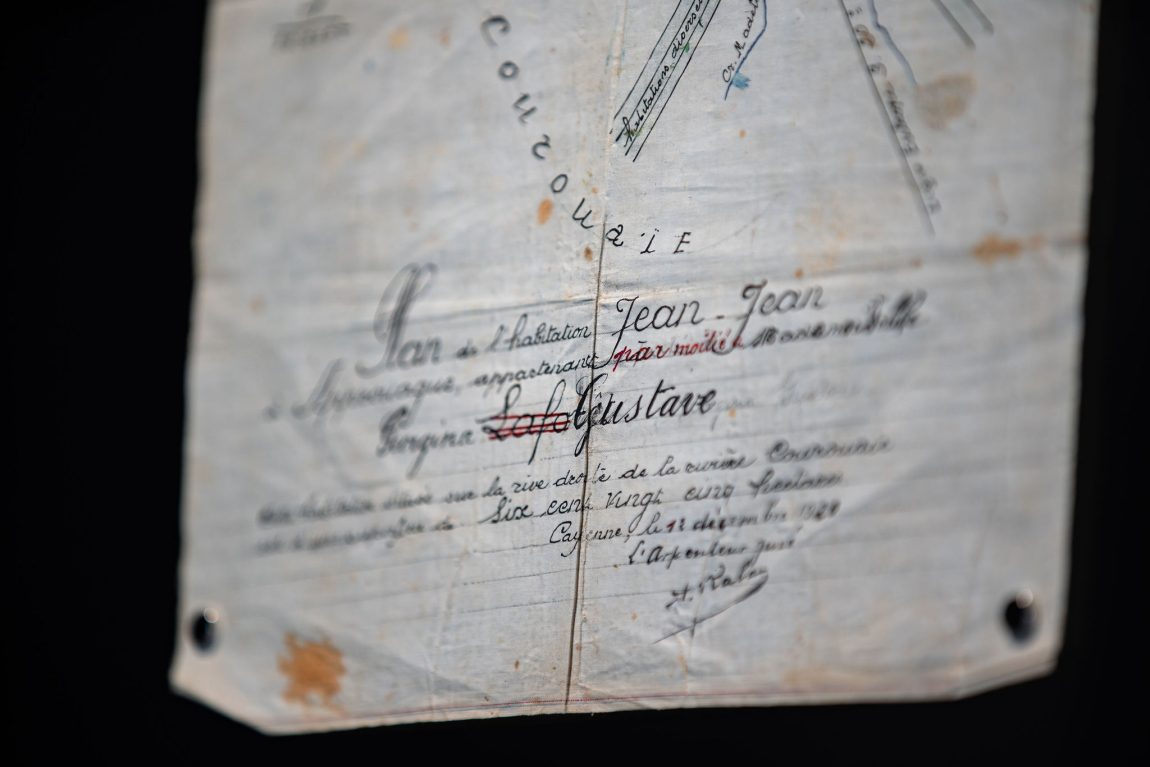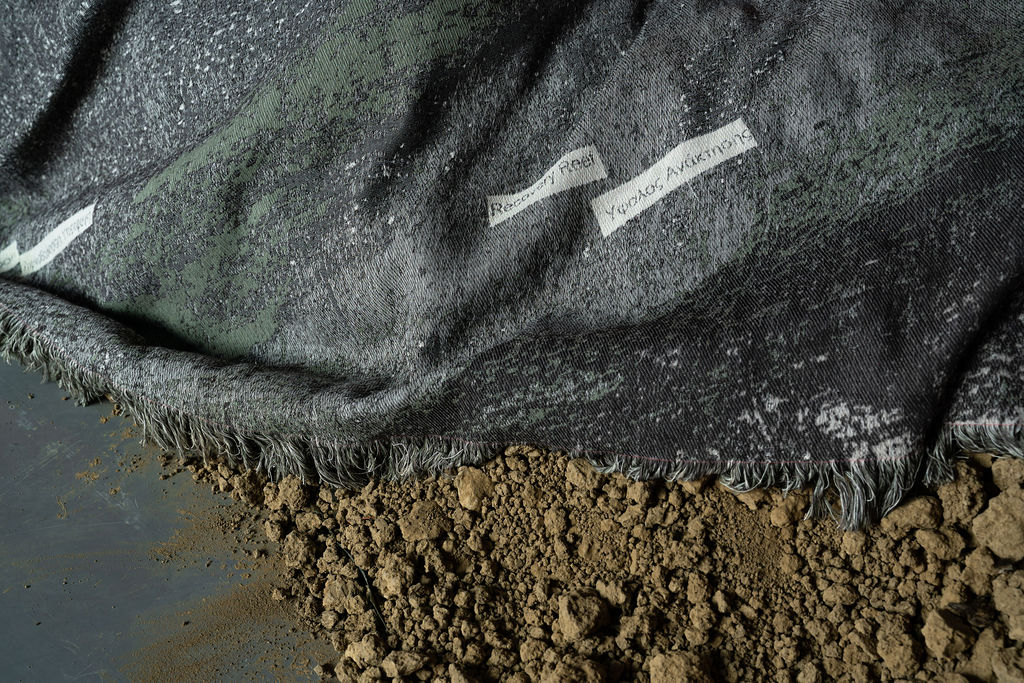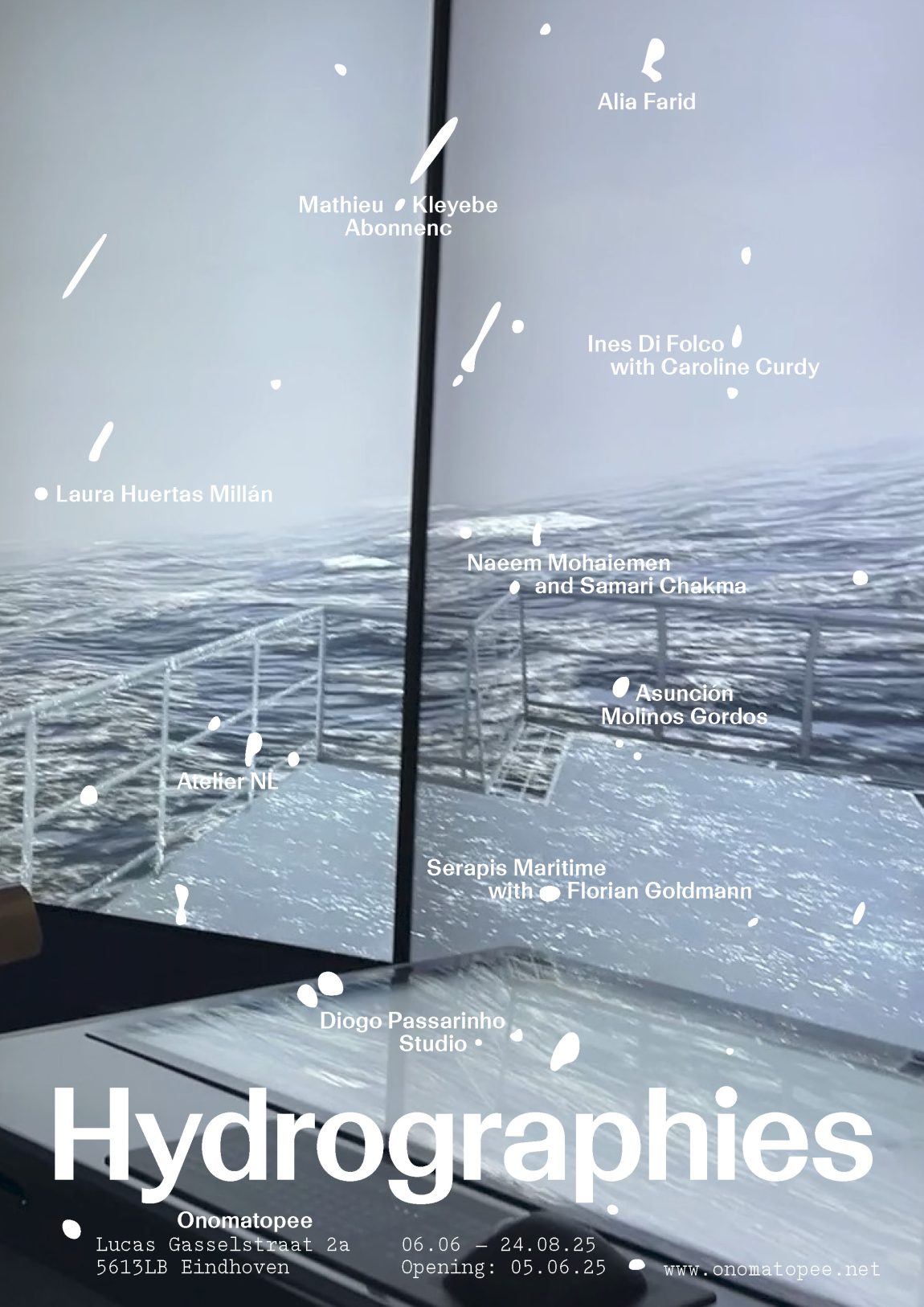Artists: Mathieu Kleyebe Abonnenc, Alia Farid, Inès Di Folco Jemni with Caroline Curdy, Laura Huertas Millán, Naeem Mohaiemen and Samari Chakma, Asunción Molinos Gordos, Serapis Maritime with Florian Goldmann, Atelier NL
Architectural Consultancy: Diogo Passarinho Studio
Curated by: Silvia Franceschini
Water flows through our lives as sustenance, border, weapon, and witness. Hydrographies brings together artists, activists, and thinkers whose work engages water as a contested terrain, revealing how rivers, oceans, and aquifers are mobilized in contemporary struggles over land, sovereignty and survival.
While geography—etymologically the writing of the earth—underpins the frameworks of contemporary geopolitics, hydrography is reconceived in the exhibition as a fluid cartography through which common desires, shared struggles, and transnational solidarities can be reimagined.
The exhibition moves across a range of interconnected contexts and a variety of media. Alia Farid’s moving-image work explores the impact of oil infrastructure and industrial waste on Iraq’s fragile wetland ecosystems. Naeem Mohaiemen and Samari Chakma bring to life the oral histories of indigenous communities displaced by the flooding caused by the Kaptai hydroelectric dam —an act of performative translation that echoes what cultural theorist Ifor Duncan calls a “hydrology of the powerless.”
The tension between the promise of modernization and the magical realism of the Amazon’s riverscapes form the backdrop for the personal and collective narratives woven through the works of Mathieu Kleyebe Abonnenc and Laura Huertas Millán. Rivers become a vessel of cultural syncretism, carrying layered sediments of history, belief, and resistance. Inès Di Folco Jemni’s work moves within this current, interweaving through paintings and textiles references to the history of the silk industry, aquatic allegories, and Afro-Caribbean myths. Asunción Molinos Gordos pays tribute to diverse ancestral water practices in the Mediterranean, advocating for systems of interdependence and solidarity. Finally, a new work by Serapis Maritime and Florian Goldmann investigates risk management at sea and the financialization of seafaring as core infrastructures of global trade, revealing how we inhabit shifting conditions defined by impermanence and instability.
The works in the exhibition offer a conceptualization of waters as complex, dynamic archives, mediating the stories and traces of those who have been lost. Drawing from the writings of authors such as Wilson Harris, Octavio Paz and Langston Hughes, they embody a desire to multiply narratives, weaving together temporalities, speculative fictions, mythologies, and languages.
At a time when war and ecological breakdown intersect with unprecedented force—from the weaponization of water in zones of armed conflict to the control of hydrological systems as tools of oppression—Hydrographies insists on reimagining our relationship to nature and communities through care, reciprocity, and resistance. By evoking ways of living that have survived the devastation of development, the exhibition invites us to read the world through its watery archives and to listen—carefully—to the voices that rise from its depths.
Exhibition design
The exhibition unfolds within a landscape conceived by Diogo Passarinho Studio (Diogo Passarinho and Gonçalo Reynolds), featuring a central installation created in collaboration with the Eindhoven based design studio Atelier NL made of clay excavated during the widening of the River Maas and the reinforcement of its dikes.
General opening hours
June 6–August 24, 2025
Open every Friday, Saturday and Sunday between 12-5 PM
At Onomatopee
Exhibition opening
Thursday, June 5, 2025
7:30–10 PM (doors open 7 PM)
Free entrance + free drink
At Onomatopee
Program line
Hydrographies is the second exhibition in the five-year program Systems and Territories. The program focuses on monographic and thematic exhibitions, which stem from long-term investigations and collaborations between artists, researchers, and communities critically examining categories, structures and ideologies upholding global modernity.
Publication
The exhibition will be accompanied by a publication, published by Onomatopee. The volume will feature contributions from artists, architects, activists and scholars in visual culture, environmental humanities and critical geography.
Image still by Alia Farid - 'Chibayish', 2023, commissioned by The Vega Foundation and Doha Film Institute. Filmed in the southern marshlands of Iraq with Riad and Fatima Bahrani. Courtesy Sfeir-Semler Gallery.



